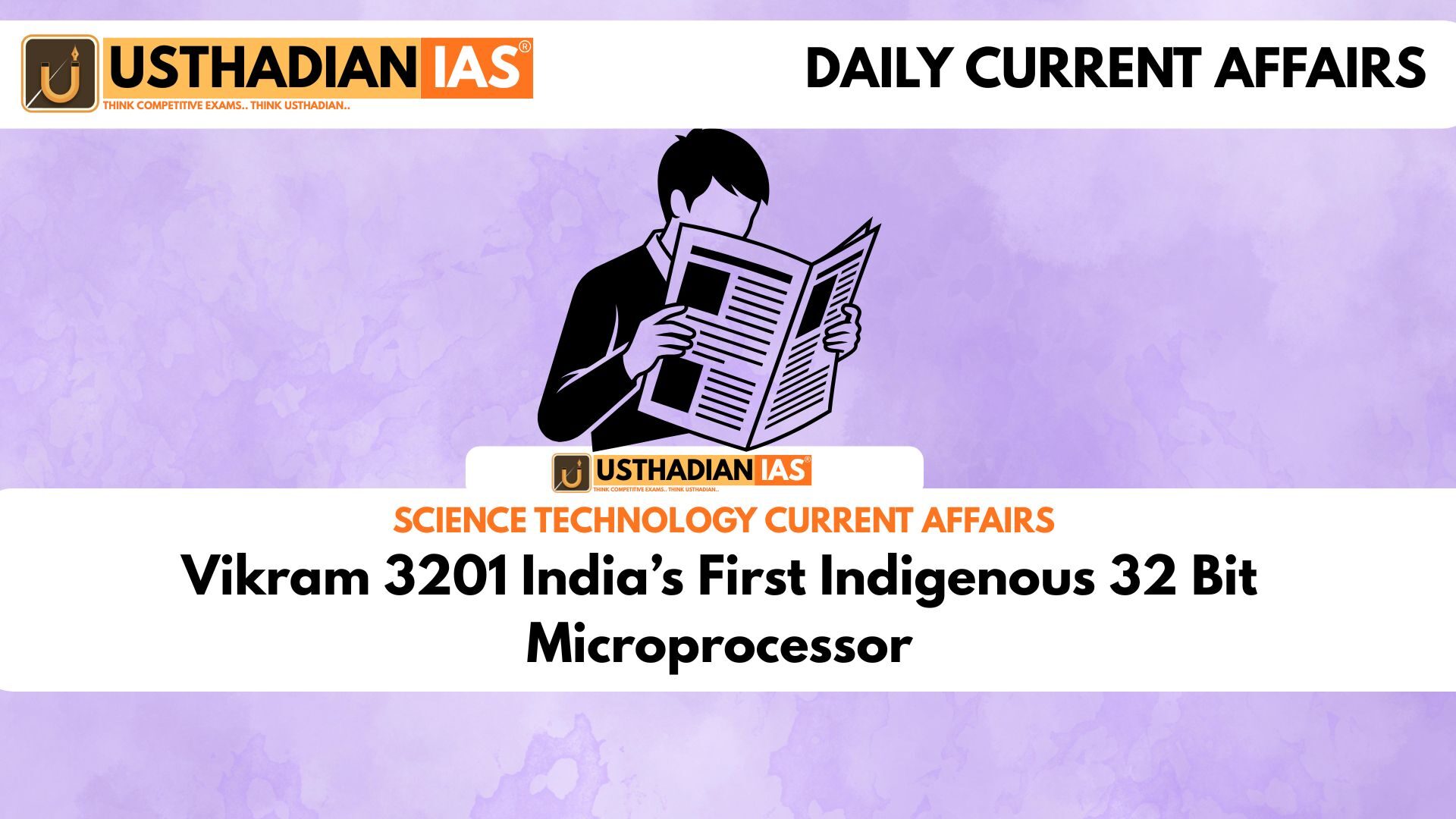India’s leap in semiconductors
Vikram 3201 India’s First Indigenous 32 Bit Microprocessor: The unveiling of Vikram 3201 marks India’s entry into advanced chip design with full indigenous capability. The processor was presented to Prime Minister Narendra Modi by Union Minister Ashwini Vaishnaw at Semicon India 2025 in New Delhi on September 2, 2025. This milestone is part of the India Semiconductor Mission, launched in 2021 to ensure self-reliance in critical technologies.
Static GK fact: The India Semiconductor Mission is an independent business division within Digital India Corporation under the Ministry of Electronics and IT.
Development and design
The chip has been jointly developed by ISRO’s Vikram Sarabhai Space Centre (VSSC) and the Semiconductor Laboratory (SCL) in Mohali. It is fabricated on a 180 nm CMOS process, making it resilient and reliable for demanding space conditions. The processor succeeds the Vikram 1601, a 16-bit chip that has powered ISRO’s launch vehicles since 2009.
Static GK Tip: The Semiconductor Laboratory (SCL) was originally set up in 1983 and became a key center for microelectronics research in India.
Key technical features
The 32-bit architecture enhances data processing speed and efficiency. It supports floating-point operations for precision in navigation and mission control. A custom Instruction Set Architecture (ISA) has been created for space applications. The processor is compatible with the Ada programming language, widely used in aerospace. An ISRO-developed toolchain including compiler, assembler, linker, and simulator ensures full indigenous control.
It is highly rugged, operating between –55°C and +125°C, and is resistant to vibration and radiation. Its reliability was proven during the PSLV C60 mission.
Applications in critical sectors
While its primary role is in space navigation, guidance, and mission management, Vikram 3201 has wider potential. It can serve in defence systems, aerospace technology, energy infrastructure, and even high-performance automotive systems. The chip reflects India’s push to expand its semiconductor ecosystem.
Static GK fact: India’s Design Linked Incentive (DLI) scheme was launched in 2021 to promote local chip design and startups in semiconductor R&D.
Strategic impact and challenges
The chip symbolizes technological sovereignty under Atmanirbhar Bharat. It places India among nations with proven capability in microprocessor design for space. However, the next challenge lies in advancing to sub-65 nm fabrication nodes, requiring more fabs, stronger academia-industry linkages, and skilled manpower.
Static GK fact: The first commercial microprocessor in the world, Intel 4004, was introduced in 1971 with a 4-bit architecture.
Static Usthadian Current Affairs Table
Vikram 3201 India’s First Indigenous 32 Bit Microprocessor:
| Topic | Detail |
| Name of processor | Vikram 3201 |
| Type | 32-bit microprocessor |
| Developers | ISRO (VSSC) and Semiconductor Laboratory, Mohali |
| Predecessor | Vikram 1601 (16-bit, since 2009) |
| Unveiled on | September 2, 2025 |
| Event | Semicon India 2025, New Delhi |
| Tested in space | PSLV C60 mission |
| Programming support | Ada language with ISRO toolchain |
| Operating range | –55°C to +125°C |
| Policy link | Atmanirbhar Bharat and India Semiconductor Mission |








